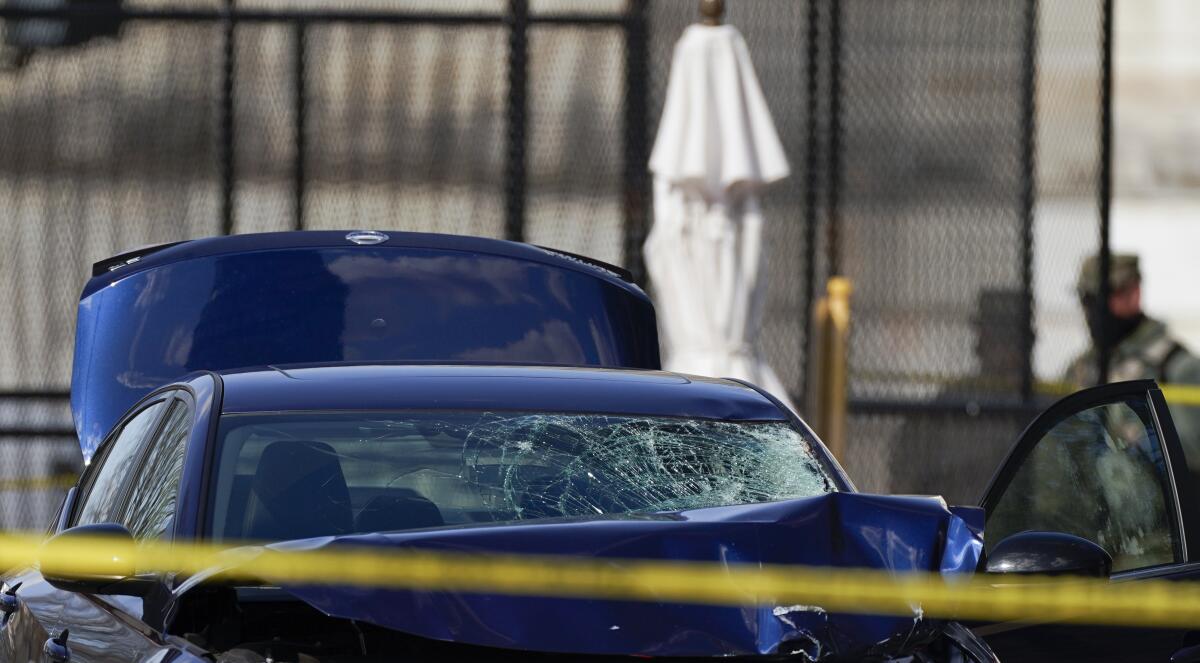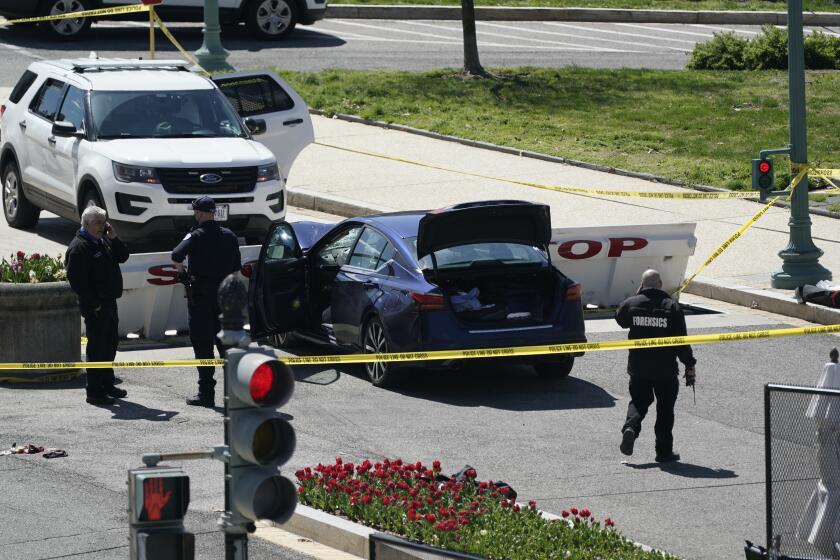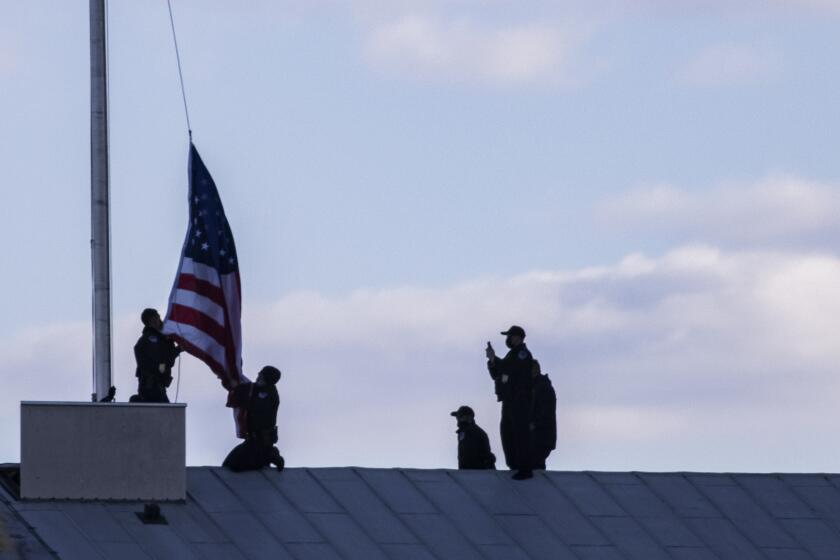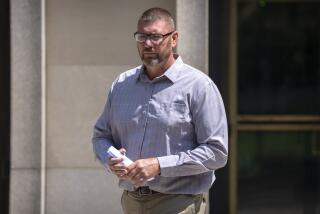Suspect in Capitol vehicle attack suffered delusions

- Share via
WASHINGTON — The man who rammed a car into two officers at a barricade outside the U.S. Capitol, killing one of them before he was shot to death by police, had been suffering from delusions, paranoia and suicidal thoughts, a U.S. official told the Associated Press on Saturday. Investigators believe it was an isolated incident from a disturbed young man.
Video of the Friday afternoon attack shows the driver emerging from the crashed car with a knife in his hand and starting to run at the pair of officers, Capitol Police acting Chief Yogananda Pittman told reporters. Police shot the suspect, 25-year-old Noah Green, who died at a hospital.
Investigators are increasingly focused on Green’s mental health as they work to identify any motive for the attack, said the official, who was not authorized to speak publicly about an ongoing investigation and spoke to the AP on the condition of anonymity. The official said investigators had talked to Green’s family, who spoke of his increasingly delusional thoughts.
In online posts that have since been removed, Green described being under government thought control and said he was being watched. He described himself as a follower of the Nation of Islam and its longtime leader, Louis Farrakhan, and spoke of going through a difficult time when he leaned on his faith. Some of the messages were captured by the group SITE, which tracks online activity.
“To be honest these past few years have been tough, and these past few months have been tougher,” he wrote in late March. “I have been tried with some of the biggest, unimaginable tests in my life. I am currently now unemployed after I left my job partly due to afflictions, but ultimately, in search of a spiritual journey.”
It was the second line-of-duty death this year for the U.S. Capitol Police, still struggling to heal from the Jan. 6 insurrection. The attack underscored that the building and campus — and the officers charged with protecting them — remain potential targets for violence.
A car slammed into a security barricade near the Capitol, killing one police officer and injuring another. The knife-wielding driver was fatally shot.
Authorities installed a giant fence around the Capitol perimeter and for months restricted traffic along the roads closest to the building, but they had begun pulling back some of the emergency measures. And the most recent incident could delay the gradual reopening of the building’s grounds to the public.
“I just ask that the public continue to keep U.S. Capitol Police and their families in your prayers,” Pittman said. “This has been an extremely difficult time for U.S. Capitol Police after the events of Jan. 6 and now the events that have occurred here today.”
Police identified the slain officer as William “Billy” Evans, an 18-year veteran who was a member of the department’s first responders unit.
House Speaker Nancy Pelosi (D-San Francisco) hailed Evans as a “martyr for our democracy,” while Senate Majority Leader Schumer (D-N.Y.) said he was “heartbroken.” Pelosi and Schumer both spoke Friday with members of Evans’ family.
President Biden said in a statement that he and his wife were heartbroken to learn of the attack and expressed condolences to Evans’ family. He directed flags at the White House to be lowered to half-staff.
In 2013, officers with the Capitol Police and Secret Service fatally shot a woman inside her car after she led them on a high-speed chase that began outside the White House. Miriam Carey’s family said she suffered from postpartum depression with psychosis but was not dangerous.
A car slammed into a security barricade near the Capitol, killing one police officer and injuring another. The knife-wielding driver was fatally shot.
Friday’s crash and shooting happened at a security checkpoint near the Capitol typically used by senators and staff on weekdays, though most were away from the building for the current recess. The attack occurred about 100 yards from the entrance of the building on the Senate side of the Capitol.
The Washington region remains on edge nearly three months after a mob of insurrectionists loyal to former President Trump stormed the building as Congress was voting to certify Biden’s presidential win.
Five people died in the Jan. 6 riot, including Capitol Police officer Brian Sicknick, who was among a badly outnumbered force trying to fight off the intruders. It took hours for the National Guard to arrive, a delay that has driven months of finger-pointing among that day’s key decision-makers.
Almost 140 Capitol Police officers were wounded in that attack, including officers not issued helmets who sustained head injuries and one with cracked ribs, according to the officers union. Two officers, one from Capitol Police and another from Washington’s Metropolitan Police Department, died by suicide following the Jan. 6 attack.
Capitol Police and National Guard troops were called upon soon afterward to secure the Capitol during Biden’s inauguration and faced another potential threat in early March linked to conspiracy theories falsely claiming Trump would retake the presidency.
The area was locked down for hours Friday but has since reopened, and National Guard troops stood outside the building on Saturday.
More to Read
Sign up for Essential California
The most important California stories and recommendations in your inbox every morning.
You may occasionally receive promotional content from the Los Angeles Times.












